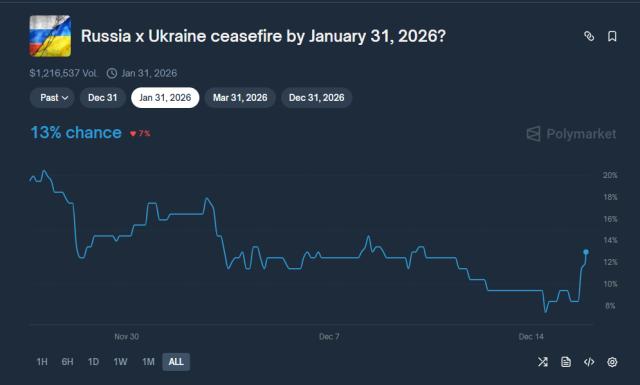
Article source: Talk Li Talk Outside
Although ETH's recent price trend has been good, if you entered the market in the past year or so, reviewing the overall situation of your holding account over the past year, you'll find that the value of your ETH is often comparable to stablecoins, especially when watching some other coins continuously rise and break new highs, while the value of ETH's position remains like a "stagnant pool" with no movement.
In investment, there seem to be two extremes: one is giving up too early, and the other is unwilling to give up.
A few days ago, I saw a friend commenting that he invested $20,000 entirely in ETH last year, and after a year, although ETH has risen again, his account is still stuck at $20,000, equivalent to wasting a year, and he wishes he had bought BTC directly.
Actually, in terms of this friend's investment philosophy, I think there's nothing wrong with it, because he bought ETH, the king of altcoins, rather than various garbage projects or on-chain meme, but this still doesn't change the fact that buying ETH has been a rather poor investment experience for him over the past year.
Although ETH has experienced 4 waves of increases from last year to now, as shown in the image below, which means in the past year, this friend theoretically had at least 3 opportunities to withdraw funds from ETH and invest in other more promising projects.
Zoom image will be displayed
But why didn't he do so?
I believe this can be psychologically attributed to a possible Sunk Cost Fallacy or Cognitive Dissonance.
Sunk Cost Fallacy refers to people being less willing to give up something after investing time, money, or effort, with a mentality of "I've already invested so much, why give up now". Cognitive Dissonance refers to when a person's inner thoughts conflict with reality, and to reduce discomfort, they often stubbornly maintain a certain behavior or belief, such as knowing an investment is failing but still unwilling to cut losses in time.
This psychology can be simply summarized in plain language as "unwillingness to give up".
Continuing with the example of the friend mentioned earlier, he kept holding onto ETH, although he had at least 3 opportunities to withdraw without loss, but due to "unwillingness to give up", fearing missing out on market movements, he would rather watch his money (position value) not grow significantly over a year, than admit he was "wrong" and seek better opportunities.
This is somewhat similar to an employee who, fearing "losing this job in the future", is afraid to give up and continues to endure low pay and overtime, not daring to resign or change positions.
So, how can one overcome this mindset? From an investment perspective, one of the better solutions is: reasonable goal planning and strict position management.
Reasonable goal planning simply means trying to counter short-term temptations with long-term planning. For example, if your investment goal is ETH reaching $10,000 in 5 years, then being temporarily stuck at $3,800 is something you don't need to worry too much about.
If you don't want to bet 100% on a single 5-year goal and want to capture other short-term opportunities, you'll need to further plan your position management. For instance, as suggested in our earlier articles, you could consider dividing your position in a 5:3:2 ratio, where 5 parts are used for long-term investment in ETH (or BTC, or the project you most believe in with a long-term industry vision), 3 parts can be used to trade blue-chip coins you like (and a small part could be allocated to betting on on-chain meme), and the remaining 2 parts kept as cash (USDT) for liquidity.
However, for many people, some seemingly reasonable strategies seem ineffective or meaningless. For example, the 5:3:2 position management plan we mentioned earlier, which we often discussed in articles from 2022, but so far, it seems few people actually follow this advice (of course, I haven't followed it either, based on my personal risk preference and goals, I currently use an 8:1:1 position plan, which I've shared specifically in previous articles).
The core issue here might also be a "fund size" problem.
For instance, someone entering this field with just $1,000 might prefer to bet on on-chain meme to make a quick, outsized profit, or even get rich overnight, rather than develop a 5:3:2 position plan.
Conversely, for those entering with $1 million, this naturally wouldn't be an issue, as they would know how to do things relatively safely and reasonably, and wouldn't directly bet $1 million on an altcoin (unless this $1 million was windfall money).
Therefore, for gamblers, there are only two outcomes: either getting rich overnight or going completely broke. Every gambler entering the market believes they can get rich overnight, but over 99.9% ultimately end up broke - this is the stark reality, but many people choose to ignore it, especially those just entering the gambling arena.
Position management is not just simple fund allocation or choosing assets to buy. In trading operations, "buying" is relatively easy - with a reasonable target plan and execution strategy, it's fairly easy to buy at a relatively low point. But "selling" seems to be a difficult problem for many, and I often see people complaining: I sold too early and regret it, or I sold too late and regret it.
Let's imagine an example:
Zhang San buys a token, and after it rises 50%, he sells, believing his gains might be reversed. But after Zhang San sells, the token continues to rise 500%, leaving him deeply regretting selling too early.
Li Si sees the token rising and jumps in, quickly gaining 200% profit. Li Si believes if he continues holding, he could make 10x, 20x, or even more, thinking his chance has finally come. He believes 200% profit is no longer satisfying. As a result, he watches the token quickly fall from its high, and before his fantasy of getting rich disappears, he's already lost half his principal. Li Si falls into deep regret, blaming himself for selling too late - selling now feels unwilling, but not selling means watching other tokens soar while he can only stare in envy.
Zhang San and Li Si might represent many people, and the main reason for these outcomes could be the "unwillingness to give up" mentality we mentioned earlier.
The market is hard to predict, and I don't want to do any thankless tasks. Currently, on the issue of buying and selling, we won't provide specific targets - we won't tell you which coin can make you rich, nor will we tell you at what price you should sell a particular coin.
What we can do is share in some articles and tell you what we currently favor, what we have bought, and at what price we sold. At the same time, we will also provide some methodological suggestions, such as the long-term trading plan we mentioned in previous articles, which recommends batch operations, with the simplest strategy being to buy during bear markets and sell during bull markets; or consider combining weekly (K-line) indicators for right-side operations, such as using EMA21 and EMA55 indicators (when EMA21 crosses EMA55 from below, it can be considered a bullish signal, and when the Bitcoin price touches above EMA21, it is a good staged entry point). For medium and short-term strategies, it is recommended to directly combine the project's fundamentals, K-lines, market sentiment, capital flow, etc., to buy and sell in batches, while making profit/stop-loss plans to control one's greed (i.e., establishing strict trading discipline).
Making money has no upper limit; the market will always have money we can't finish earning and various new opportunities. However, losing money does have an upper limit; your capital volume is your limit, which means your principal is your ticket to enter the market, and a major loss could permanently deprive you of the chance to return to the market.
Just as we believe this bull market might see Bitcoin reach $130,000, $150,000, or even higher, we still decided to start selling in batches from $100,000 to realize necessary profits. We won't regret selling too early or too late; we are simply executing our trading discipline and plan strictly according to our risk appetite.
"Survive first, then make money" is an excellent investment philosophy. The market will never lack new opportunities, but whether your principal and mindset can wait for that opportunity is the key question you should consider.
Often, when people fall into the mindset of pursuing perfection in every trade, it usually leads to fewer "good trades" overall and may even lead to revenge trading. Therefore, we won't pursue so-called perfect decisions (always buying at the lowest point and selling at the highest point) or absolute returns on individual trades; we care more about overall position size under risk management.
In summary, always make clear decisions about your funds and try to be both offensive and defensive. Whether you're a diamond hands or paper hands, there's no need to meaninglessly compare with others; as long as your position makes you feel comfortable most of the time.
Everyone's perception of money is different. People lose money not because of market makers or whales, but ultimately due to their own "unwillingness to let go" mentality.
The market is ruthless yet full of opportunities. It often rewards those with discipline, patience, and long-term strategic thinking, while punishing those who are greedy, emotional, and lack any strategy. So, which type of person are you?
That's all for today. The sources of images/data mentioned in the text have been supplemented in the Notion notes. The above content is a personal perspective and analysis, solely for learning and communication purposes, and does not constitute any investment advice.
Article source: https://mp.weixin.qq.com/s/ayRuGhMCV3Xtsf9qztkwoA







